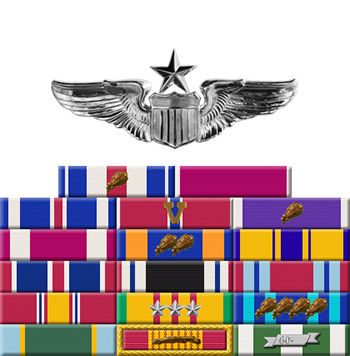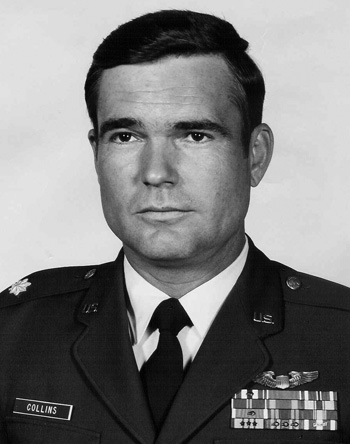
|
Thomas E. Collins, III |
 |
|||
| Rank, Service | ||||
Lieutenant Colonel O-5, U.S. Air Force |
||||
| Veteran of: | ||||
|
||||
| Tribute: | ||||
Tom Collins was born in 1937 in Utica, Mississippi. He was commissioned through the Air Force ROTC Program at Mississippi State University on May 25, 1959, and completed Undergraduate Pilot Training and was awarded his pilot wings in October 1960. Collins flew the F-102 Delta Dagger and F-4 Phantom II, and was flying combat missions in Southeast Asia while TDY with the 68th Tactical Fighter Squadron from George AFB, California, when he was forced to eject over North Vietnam on October 18, 1965. He was immediately captured and taken as a Prisoner of War. After spending 2,674 days in captivity, Col Collins was released during Operation Homecoming on February 12, 1973. After hospitalization, Collins went through Armed Forces Staff College in Norfolk, Virginia, and then received an AFIT assignment to the University of Southern Mississippi to get his MBA. He served with the Air Force Institute of Technology at Wright Patterson AFB, Ohio, from January 1974 to May 1975, and as Assistant Professor of Aerospace Studies at Air Force ROTC Detachment 432 at the University of Southern Mississippi from May 1975 to June 1978. His final tour of duty was spent at Maxwell AFB, Alabama, from June 1978 until his retirement from the Air Force on February 29, 1980. After retiring from the Air Force, Tom served as Executive Director of the Mississippi Veteran's Farm & Home Board from 1981 to 1987, he was the Republican nominee for Congress for Mississippi's 4th District in 1988, he served as Assistant Secretary of the U.S. Department of Labor from 1989 to 1992, and he served on the Board of Directors for the Institute for International Commerce from 1992 to 1993. Tom and his wife Donnie were married for over 52 years until her death on November 14, 2011. |
||||
|
||||

